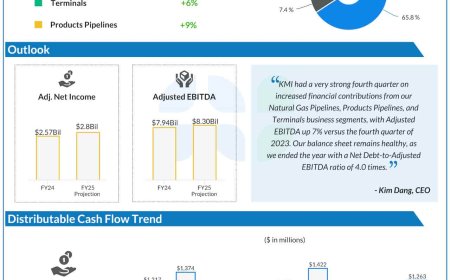Steps to Implement Organizational Transformation Effectively
It’s organizational change. Its impact touches the company structure, culture, and the processes it uses. Often, the cause is external. Change in the market, new technologies, or shifts in consumers’ behaviors can prompt organizational transformation. Planning, proper communication, and a changed heart are all required. Here’s a step-by-step approach to navigating such a complex process. […] The post Steps to Implement Organizational Transformation Effectively appeared first on Insights Success.

It’s organizational change. Its impact touches the company structure, culture, and the processes it uses. Often, the cause is external. Change in the market, new technologies, or shifts in consumers’ behaviors can prompt organizational transformation. Planning, proper communication, and a changed heart are all required.
Here’s a step-by-step approach to navigating such a complex process.
Know When There is a Need for Change
Recognition of and understanding the causes for change is the first step in any transformation journey. Companies often face problems that require a new approach. It may be declining sales, increased competition, or even outdated processes.
By realizing these issues early, leadership can set the stage for a successful transformation. The most important thing is gathering data, analyzing market trends, and soliciting employee feedback to better understand the current situation.
Developing a Clear Vision
Having identified the requirement for change, the following step should be the development of the clear vision about what changes are going to be brought forth. The vision must be able to explicate the envisioned future for the organization and how such a future fits within the aims and values as a whole.
A good vision guides all concerned stakeholders and helps keep the mind focused on the final objectives. It should be communicated clearly to all employees at all levels, ensuring that every employee understands the purpose of the transformation.
Engagement of Leadership and Stakeholders
Leadership is the heart of success in organizational transformation. Top-down and key stakeholders’ commitment is required to create enough momentum. The leaders supporting the change need to lead the process and be readily available, listen to ideas and concerns of employees, and be visible to them all. A coalition of believing supporters can give a stronger underpinning for the transformation.
Current State Assessment
Current understanding is necessary for any change: current state analysis is required and includes checking on the way things work, culture, and the existing structures, which might include surveys and interviews of different employees or even focus groups. Strengths and weaknesses can then be identified with this process. Knowing that some aspects work well, while others need change, will help set a focused transformation plan.
A Strategic Plan
A strategic plan to be developed based on vision and knowledge of the existing state will help the institution achieve its desired transformation. Specific steps that one needs to take in terms of objective, timeline, and measurable outcomes are put into a strategic plan to be executed. Involvement of employees in the process of planning can help give better ideas and increase buy-in. This change strategy must be flexible to withstand the unexpected situations of a change process.
Effective Communication is a Must
Effective communication is thus the essence of the transformation process. All employees should be kept abreast of progress made, difficulties encountered, and successes attained. There is an increase in trust with transparency. Misunderstandings would not likely occur in the same manner. This would make it possible for employees to be able to voice their views and complaints. Open channels of communication would allow for feedback, which can be invaluable to refine the transformation process.
Training and Support
Provide them with training and support to help the workers become better prepared for the changes to come. This may take the form of workshops, seminars, or online courses that teach the workers to acquire new skills and cope with the new processes in place. Moreover, by providing the employees with support through mentoring or peer-to-peer support, it can facilitate this process of transition. Knowledge and skill-enabled employees enhance their confidence in the process of maintaining healthy attitudes toward change.
Cultivating Innovative Culture
Organizational transformation is often a change in culture to embrace newness and new ways of doing things. An innovative culture encourages creativity and experimentation by challenging the employees to submit their ideas and rewarding others who positively contribute to organizational transformation. The successes of such changes are celebrated while failures are learned from, building a resilient organization that thrives in a constantly dynamic environment.
Monitoring Progress and Adjusting
As the change process is occurring, it is necessary to track the progress over time. This can be obtained by reviewing key performance indicators and obtaining the perceptions of employees for their experience with the change. Evaluation of whether or not the change process is on track or adjustments have to be made will provide a sense of maintaining momentum and motivation. Being receptive to change and willing to adapt strategies accordingly, based on feedback from others, will be imperative for long-term success.
Celebrate Successes
Acknowledge and celebrate milestones in the transformation journey. Celebrations can be informal team meetings or official recognition programs. Acknowledging achievements boosts morale and reinforces the commitment to change. It reminds everyone of the progress that has been made and continues to motivate efforts toward achieving the overall goal.
Conclusion
Transformation within the organization is complex but rewarding. By realizing the need for change, an articulated vision, open leadership, and an environment of free communication, firms can travel this journey much better. Sufficient training and assistance will then prepare the staff for the new challenge. Monitoring the progress made and the success celebrated along the way helps in keeping the momentum and commitment toward the transformation. Finally, an appropriate and thoughtful approach to organizational change can lead to sustainable improvements and a more agile and innovative company.
The post Steps to Implement Organizational Transformation Effectively appeared first on Insights Success.











































